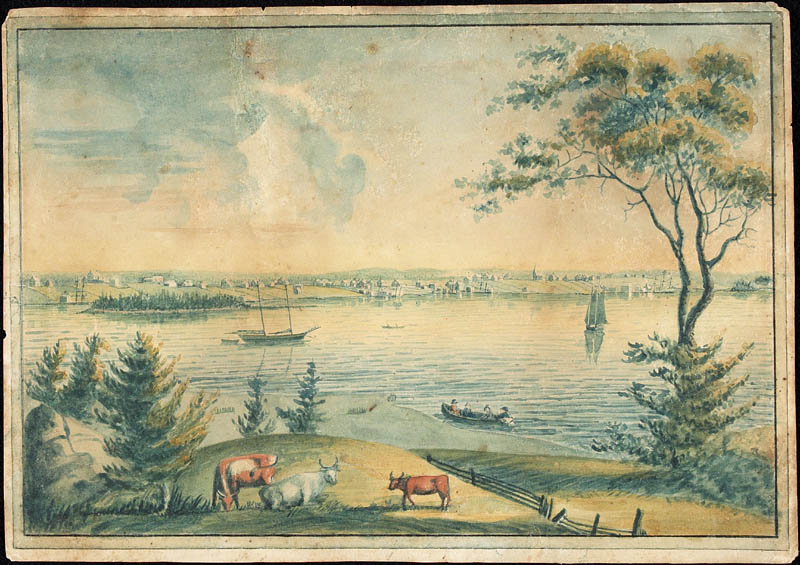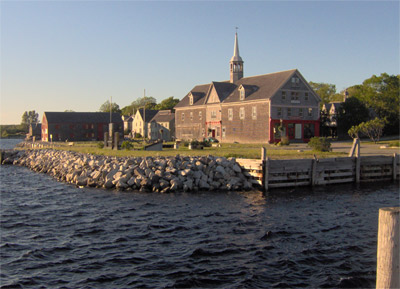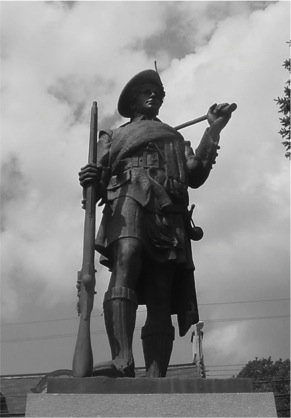|
Nova Scotia Museum
Nova Scotia Museum (NSM) is the corporate name for the 28 museums across Nova Scotia, Canada, and is part of the province's tourism infrastructure. The organization manages more than 200 historic buildings, living history sites, vessels, and specialized museums and about one million artifacts and specimens, either directly or through a system of co-operative agreements with societies and local boards. The NSM delivers programs, exhibits and products which provide both local residents and tourists in Nova Scotian communities an opportunity to experience and learn about Nova Scotia's social and natural history. More than 600,000 people visit the facilities each year. History The Nova Scotia Museum was created by the Nova Scotia Museum Act, a provincial legislation. The Nova Scotia Museum began with the collection of the Mechanics Institute in Halifax, founded in December 1831. The museum was formally established in 1868. The Rev. Dr. David Honeyman was the first curator. He was fol ... [...More Info...] [...Related Items...] OR: [Wikipedia] [Google] [Baidu] |
Nova Scotia Museum Of Industry
The Nova Scotia Museum of Industry is a provincial museum located in Stellarton, Nova Scotia, dedicated to the story of Nova Scotia work and workers. Part of the Nova Scotia Museum system, the museum aims to explain how Nova Scotia was affected by the opportunities and challenges of the Industrial Age. The museum began with a series of studies on ways to preserve Nova Scotia's industrial heritage beginning in 1974. A curator was hired and the collection was started in 1986. The Museum building (80,000 square feet) was designed by Halifax architectFowler, Bauld and Mitchelland was completed in 1990 and the museum opened to the public in 1995. The museum occupies a site beside the Trans Canada Highway which includes some of the oldest industrial sites in Nova Scotia including the Foord Pit, once the deepest coal mine in the world and the Albion Railway, the first passenger and freight railway in Canada. The collection comprises more than 30,000 objects. Notable artifacts incl ... [...More Info...] [...Related Items...] OR: [Wikipedia] [Google] [Baidu] |
Nova Scotia
Nova Scotia ( ; ; ) is one of the thirteen provinces and territories of Canada. It is one of the three Maritime provinces and one of the four Atlantic provinces. Nova Scotia is Latin for "New Scotland". Most of the population are native English-speakers, and the province's population is 969,383 according to the 2021 Census. It is the most populous of Canada's Atlantic provinces. It is the country's second-most densely populated province and second-smallest province by area, both after Prince Edward Island. Its area of includes Cape Breton Island and 3,800 other coastal islands. The Nova Scotia peninsula is connected to the rest of North America by the Isthmus of Chignecto, on which the province's land border with New Brunswick is located. The province borders the Bay of Fundy and Gulf of Maine to the west and the Atlantic Ocean to the south and east, and is separated from Prince Edward Island and the island of Newfoundland (island), Newfoundland by the Northumberland Stra ... [...More Info...] [...Related Items...] OR: [Wikipedia] [Google] [Baidu] |
Granville Ferry, Nova Scotia
Granville Ferry is a village in the Canadian province of Nova Scotia, located in Annapolis County. Granville Ferry is located directly across the Annapolis River from Annapolis Royal, Nova Scotia. It was the northern terminus for ferries running across the river. Granville Ferry was a major shipbuilding centre in the Golden Age of Sail. The village was also home to Bessie Hall, a notable female mariner in the 19th century. The community is named after John Carteret, 2nd Earl Granville. Its population at the 2021 census was 152, an increase of 38.2% since 2016. Demographics In the 2021 Census of Population conducted by Statistics Canada Statistics Canada (StatCan; french: Statistique Canada), formed in 1971, is the agency of the Government of Canada commissioned with producing statistics to help better understand Canada, its population, resources, economy, society, and cultur ..., Granville Ferry had a population of 152 living in 74 of its 92 total private dwellings, ... [...More Info...] [...Related Items...] OR: [Wikipedia] [Google] [Baidu] |
Yarmouth, Nova Scotia
Yarmouth is a town in southwestern Nova Scotia, Canada. A port town, industries include fishing, and tourism. It is the terminus of a ferry service to Bar Harbor, Maine, run by Bay Ferries. History Originally inhabited by the Mi'kmaq, the region was known as "Keespongwitk" meaning "Lands End" due to its position at the tip of the Nova Scotia peninsula. European settlement The region was visited in 1604 by Samuel de Champlain, who named it "Cap-Fourchu", meaning "forked or cloven cape." The first Europeans to make a settlement on these shores were the French Acadians. They set up a small fishing settlement known as "Tebouque" in the mid 1600s and by 1750 the population was 50 people. During the Seven Years' War, New England Planters settled at what is now the town of Yarmouth in 1759; the grantees were from Yarmouth, Massachusetts and they requested that Yarmouth be named after their former home. Yarmouth was founded on June 9, 1761, when a ship carrying three families arriv ... [...More Info...] [...Related Items...] OR: [Wikipedia] [Google] [Baidu] |
Lower West Pubnico, Nova Scotia
Argyle, officially named the Municipality of the District of Argyle, is a district municipality in Yarmouth County, Nova Scotia. Statistics Canada classifies the district municipality as a municipal district. The district municipality occupies the eastern portion of the county and is one of three municipal units - the other two being the Town of Yarmouth and the Municipality of the District of Yarmouth. Argyle is a bilingual community, in which native speakers of English and French each account for about half of the population. As of 2016, 60% of the population speaks both French and English, one of the highest rates of bilingualism in Canada.Western Regional Enterprise Network History Originally inhabited by the Mi'kmaq, it was called "Bapkoktek". In 1766, after his service in the French and Indian Wars, Lt. Ranald MacKinnon was given a land grant of . He called it Argyle ( Argyll) because he was reminded of his previous home in the Highlands of Scotland. The township w ... [...More Info...] [...Related Items...] OR: [Wikipedia] [Google] [Baidu] |
Bridgewater, Nova Scotia
Bridgewater is a town in Lunenburg County, Nova Scotia, Canada, at the navigable limit of the LaHave River. With a 2021 population of 8,790, Bridgewater is the largest town in the South Shore region. Priding itself as "The Main Street of the South Shore," Bridgewater has long been established as the primary commercial and professional service centre in the southern half of the province. The community boasts a diverse local economy, as well as larger national and international employers. History In 1604 French explorer Pierre Dugua, Sieur de Mons visited the area, and in the mid-1600s there was a small French settlement downriver of the current site at LaHave. The first bridge was built around 1825, and by 1850 the village had a population of 300. Lots were first surveyed in 1874. Around this time industries were developed using water power from the river, including lumber manufacture, a carding mill, a foundry, a gristmill and a tannery. From 1889 the town was connected by r ... [...More Info...] [...Related Items...] OR: [Wikipedia] [Google] [Baidu] |
New Ross, Nova Scotia
New Ross is a community in the Canadian province of Nova Scotia, located in the Chester Municipal District. It is home to Ross Farm Museum, a living history agricultural museum. Some localities of New Ross have colloquial names, including Charing Cross, Seffernville, Harriston, Aaldersville, the Forties Settlement, Mill Road, Leville, New Russell, Lake Ramsay, and Fraxville. Name The settlement was named Sherbrooke after Sir John Coape Sherbrooke who was Lieutenant Governor at the time, and renamed New Ross in 1863 after Earl Henry Phipps of Mulgrave, whose second title derives its name from New Ross, Ireland. This was due to there being another Sherbrooke in Guysborough County. History Prior to the arrival of the former Fencibles, the Mi'kmaq were the only inhabitants of what is now New Ross, and the limited number in the area had numerous friendly interactions with the new settlers. New Ross 20 is a reservation of the Sipekneꞌkatik First Nation in the vicinity. Th ... [...More Info...] [...Related Items...] OR: [Wikipedia] [Google] [Baidu] |
Liverpool, Nova Scotia
Liverpool is a Canadian community and former town located along the Atlantic Ocean of the Province of Nova Scotia's South Shore. It is situated within the Region of Queens Municipality which is the local governmental unit that comprises all of Queens County, Nova Scotia. History Liverpool's harbour was an ancient seasonal camp of Nova Scotia's native Mi'kmaq and was known as Ogomkigeak meaning "dry sandy place" and Ogukegeok, meaning "place of departure". Samuel de Champlain originally named the harbour Port Rossignol, in honour of Captain Rossignol, an early 17th-century founder of New France in North America who used the harbour for trading. Later Nicolas Denys, a pioneering 17th-century French explorer and trader of Nova Scotia, was granted land here by the leader of Acadia, Isaac de Razilly (c. 1632). Following the Expulsion of the Acadians (1755) during the French and Indian War (the North American theatre of the Seven Years' War), Liverpool was founded by New Engl ... [...More Info...] [...Related Items...] OR: [Wikipedia] [Google] [Baidu] |
Lunenburg, Nova Scotia
Lunenburg is a port town on the South Shore of Nova Scotia, Canada. Founded in 1753, the town was one of the first British attempts to settle Protestants in Nova Scotia. The economy was traditionally based on the offshore fishery and today Lunenburg is the site of Canada's largest secondary fish-processing plant. The town flourished in the late 1800s, and much of the historic architecture dates from that period. In 1995 UNESCO designated it a World Heritage Site. UNESCO considers the site the best example of planned British colonial settlement in North America, as it retains its original layout and appearance of the 1800s, including local wooden vernacular architecture. UNESCO considers the town in need of protection because the future of its traditional economic underpinnings, the Atlantic fishery, is now very uncertain. The historic core of the town is also a National Historic Site of Canada. Toponymy Lunenburg was named in 1753 after the Duke of Braunschweig-Lüneburg w ... [...More Info...] [...Related Items...] OR: [Wikipedia] [Google] [Baidu] |
Shelburne, Nova Scotia
Shelburne is a town located in southwestern Nova Scotia, Canada. History Shelburne lies at the southwest corner of Nova Scotia, at roughly the same latitude as Portland, Maine in the United States. The Mi'kmaq call the large and well-sheltered harbour ''Logumkeegan'' or ''Sogumkeagum.'' The first Europeans to make a settlement on these shores were the French Acadians. They set up a small fishing settlement known as Port Razoir in the late 17th century, named after the harbour's resemblance to an open razor. Early European settlers had small subsistence farms, but most of the inhabitants' income from that time to the present has been derived from the sea. The Acadian fishing settlement was abandoned after repeated raids from New England colonists during Queen Anne's War in 1705, in which five Acadians were taken prisoner, and again in 1708. Raid on Port Roseway (1715) On May 14, 1715, New England naval commander Cyprian Southack attempted to create a permanent fishing station ... [...More Info...] [...Related Items...] OR: [Wikipedia] [Google] [Baidu] |
Barrington, Nova Scotia (community)
Barrington is an unincorporated Canadian rural community of about 4,000 people on the northeast corner of Barrington Bay in Shelburne County, Nova Scotia. Barrington is part of the much larger Municipality of the District of Barrington, also wholly within Shelburne County. History Barrington's inhabitants are mostly descendants of the first settlers from Chatham and Harwich on Cape Cod, Massachusetts who emigrated to the area during the 1760s. One such settler was Solomon Kendrick, father of John Kendrick, explorer and maritime fur trader. Solomon moved from Harwich, Cape Cod, to Barrington in the 1760s. There are several interesting historical sites in the second of the villages which have as part of their name Barrington. Actually Barrington Head is named only locally as such because of it being located at the head of Barrington Bay. The actual village is that of Barrington, but for geographical identity we shall accept the three names stated above. The first of the histo ... [...More Info...] [...Related Items...] OR: [Wikipedia] [Google] [Baidu] |
Pictou, Nova Scotia
Pictou ( ; Canadian Gaelic: ''Baile Phiogto'') is a town in Pictou County, in the Canadian province of Nova Scotia. Located on the north shore of Pictou Harbour, the town is approximately 10 km (6 miles) north of the larger town of New Glasgow. Once an active shipping port and the shire town of the county, today Pictou is primarily a local service centre for surrounding rural communities and the primary tourist destination in this region of Nova Scotia. The name Pictou derives from the Mi'kmaq name , meaning "explosive place", a reference to the river of pitch that was found in the area, or perhaps from methane bubbling up from coal seams below the harbour. History Pictou Town had been the location of an annual Mi'kmaq summer coastal community prior to European settlement. Pictou was part of the Epekwitk aq Piktuk Mi'kmaq District, which included present-day Prince Edward Island and Pictou. Pictou Town was a receiving point for many Scottish immigrants moving to a new ... [...More Info...] [...Related Items...] OR: [Wikipedia] [Google] [Baidu] |



_(cropped).jpg)


